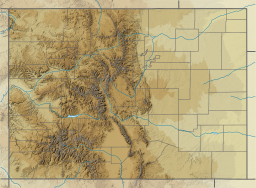| Williams Fork Reservoir | |
|---|---|
 The reservoir in 2016. | |
| Location | Grand County, Colorado, United States |
| Coordinates | 40°00′55″N106°12′37″W / 40.01528°N 106.21028°W |
| Type | reservoir |
| Primary inflows | Williams Fork of the Colorado River |
| Primary outflows | Williams Fork of the Colorado River |
| Basin countries | United States |
| Surface area | 1,860 acres (750 ha) |
| Water volume | 97,000 acre⋅ft (120,000,000 m3) |
| Surface elevation | 7,811 ft (2,381 m) |
Williams Fork Reservoir, located near the town of Parshall in Grand County, Colorado, is owned and operated by Denver Water. The reservoir impounds the Williams Fork of the Colorado River.

